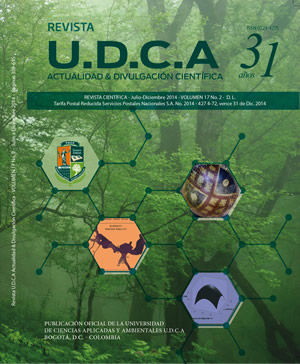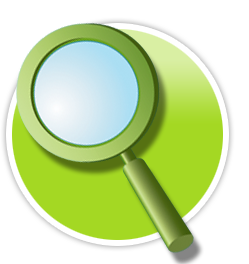Caracterización genética de seis microsatélites en equinos colombianos Equus caballus (Equidae) y su uso en pruebas de filiación
Genetic characterization of six microsatellites in colombian horses Equus caballus (Equidae) and its use for parentage testing
Contenido principal del artículo
Resumen
Los equinos colombianos son una especie de gran importancia social, cultural y comercial, pero el desconocimiento de su potencial genético ha limitado los programas de selección y de mejoramiento. Para dar inicio a este proceso, se evaluó la variabilidad genética de 264 caballos pertenecientes a las razas equinas caballo criollo colombiano, paso fino colombiano y trocha pura colombiana. La caracterización alélica, se hizo con seis marcadores moleculares tipo microsatélite (ASB17, AHT4, AHT5, HTG4, HMS3 y HMS6) para un posterior estudio poblacional. El análisis genético de los seis microsatélites indica alto polimorfismo alélico para el locus ASB17 con 18 alelos, siendo el menos variable es el HTG4, con siete alelos; el número promedio de alelos fue de 9,83. Las frecuencias alélicas muestran que las poblaciones están representadas por pocos alelos. Para determinar la variabilidad genética en la población, se calculó la diversidad génica He 0,773 y Ho 0,765 indicando una alta variabilidad. Por otra parte, se encontró una alta diversidad genética en los caballos de Cundinamarca, con un coeficiente de endogamia FIS0,0011. Para los casos de filiación, los loci AHT4 y HMS3 demostraron ser los más informativos por sus altos valores en la probabilidad de exclusión; sin embargo, el valor de probabilidad acumulada de 0,9543 con los seis marcadores relativamente bajo. Se recomienda cambiar los marcadores AHT4 y HMS6 por otros más informativos y aumentar el número de marcadores en el caso de su uso en pruebas de paternidad.
Palabras clave:
Descargas
Datos de publicación
Perfil evaluadores/as N/D
Declaraciones de autoría
- Sociedad académica
- Universidad de Ciencias Aplicadas UDCA
- Editorial
- Universidad de Ciencias Aplicadas y Ambientales U.D.C.A
Detalles del artículo
Referencias (VER)
ACHMANN, R.; CURIK, I.; DOVC, P.; KAVAR, T.; BODO, I.; HABE, F.; MARTI, E.; SÖLKNER, J.; BREM, G. 2004. Microsatellite diversity, population subdivision and gene flow in the Lipizzan horse. Animal Genetics. 35:285-292.
ACHMANN, R.; HUBER, T.; WALLNER, B.; DOVC, P.; MÜLLER, M.; BREM, G. 2001. Base substitutions in the sequences flanking microsatellite markers HMS3 and ASB2 interfere with parentage testing in the Lipizzan horse. Animal Genetics 32:52.
ABERLE, K.S.; HAMANN, H.; DRÖGEMÜLLER, C.; DISTL, O. 2004. Genetic diversity in German draught horse breeds compared with a group of primitive, riding and wild horses by means of microsatellite DNA markers. Animal Genetics 35:270-277.
BELKHIR, K. 2003. DetSel 1.0: a computer program to detect markers responding to selection. J. Hered. 94(5):429-431.
BELKHIR, K.; BORSA, P.; GOUDET, J.; CHIKHI, L.; BONHOMME, F. 2000. GENETIX 4.02, logiciel sous Windows TM pour la génétique des populations. Laboratoire Génome, Populations, Interactions: CNRSUPR. 9060. Université de Montpellier II, Montpellier, France.
BINNS, MM.; HOLMES, NG.; HOLLIMAN, A.; SCOTT, AM. 1995. The identification of polymorphic microsatellite loci in the horse and their use in Thoroughbred parentage testing. British Vet. J. 151:9-15.
BJORNSTAND, G.; GUNNBY, E.; ROED, K.H. 2000. Genetic structure of Norweigan horse breeds. J. Animal Breeding and Genetics 117:307-317.
BJORNSTAND, G.; ROED, K.H. 2001. Breed demarcation and potential for breed allocation of horses assessed by microsatellite markers. Animal Genetics. 32:59-65.
BOWLING, AT. 1997 Horse Genetics. Eds. CAB International Oxford UK. p.45-58.
BUCHANAN. F.C.; ADAMS. L.J.; LITTLEJOHN. R.P.; MADDOX. J.F; CRAWFORD. A.M. 1994. Determination of evolutionary relationships among sheep breeds using microsatellites. Genomics 22: 397-403.
CAÑON, J.; CHECA, M.; CARLEOS. C.; VEGA-PLA, J.L.; VALLEJO, M.; DUNNER, S. 2000. The genetic structure of Spanish Celtic horse breeds inferred from microsatellite data. Animal Genetics.31:39-48.
CARRINGTON, M.; MARTI, D.; WADE, J.; KLITZ, W.; BARCELLOS, L.; THOMPSON, G.; CHEN, J.; TRUEDSSON, L.; STURFELT, G. 1999. Microsatellite markers in complex disease: Mapping disease-associated regions within the human major histocompatibility complex. En: OXFORD Univ. Press. Microsatellites: Evolution and Applications. p.225 236.
CAVALLI-SFORZA, L.L.; EDWARDS, A.W.F. 1967. Phylogenetic analysis: models and estimation procedures. Am. J. Human Genetics 19:233-257.
CHIKHI, L.; GOOSSENS, B.; TREANOR, A.; BRUFORD, M.W. 2004. Population genetic structure of and inbreeding in an insular cattle breed, the Jersey, and its implications for genetic resource management. Heredity. 92:396-401.
CHO, GJ.; CHO, BW. 2003. Validation of microsatellite markers for routine canine parentage testing in Korea. Korean J. Genet. 25:103-108.
ELLEGREN, H.; ANDERSSON, L.; JOHANSSON, M.; SANDBERG, K. 1992. DNA fingerprint in horses using simple (TG)n probe and its application to population comparisons. Animal Genetics. 23:1-9.
ESTRADA, L.R. 1995. Los caballos criollos colombianos también tienen historia. Revista Fedequinas. 2:56-60.
FAO (Organización para la Agricultura y la Alimentación). 1997.The global strategy for the management of Farm Animal Genetic Resources: A call for action. FAO.Publishing Rome. p.10-13
FAO (Organización para la Agricultura y la Alimentación). 2004. Domestic Animals Diversity, Disponible desde Internet en: http://www.fao.org/dad.is/ (con acceso 10/02/05).
FERNÁNDEZ, J.; TORO, M.; CABALLERO, A. 2004. Managing individuals? contributions to maximize the allelic diversity maintained in small, conserved populations. Conservation Biology. 18(5):1358-1367
GIOVAMBATTISTA, G.; RIPOLI, M.V.; LIRON, J.P.; VILLEGAS-CASTAGNASSO, E.E.; PERAL-GARCIA, P.; LOJO, M.M. 2001. DNA typing in a cattle stealing case. J. Forensic Sci. 46(6):1484-1486.
GLAZKO, M. 1998 XXVIth International Conference on Animal Genetics. Auckland, NZ. Section A. p.25.
GLOWATZKI-MULLIS, ML.; GAILLARD, C.; WIGGER, G.; FEIES, R. 1995. Microsatellite-based parentage control in cattle. Anim Genet. 26, 7-12.
GOUDET, J. 2001. Disponible desde Internet en: http://www.unil.ch/izea/softwares/fstat.html (con acceso 07/03/05).
HANCOCK, J.M. 1999. Microsatellites and other simple sequences: genomic context and mutational mecanisms. En: Goldstein, D.B.; Schlötterer, C. edits. Microsatellites: Evolution and Apllications. Oxford Univ. Press. p.1-23.
HERRERA, J.; NAVARRETE, A. 1978. Descripción y evaluación de las características raciales del caballo criollo. Tesis de grado. Facultad de Medicina Veterinaria y de Zootecnia. Universidad Nacional de Colombia. Bogotá. p.54-62.
INTERNATIONAL SOCIETY ANIMAL SCIENCES (ISAG). 1996. M values and Chromosomes Assignaments for STRs Reported by VGL. Veterinary Genetic Laboratory, School of Veterinary Medicine, University of California, Davis, CA. Disponible desde Internet en: http://www.vgl.ucdavis.edu/~lvmillon/mvalues.html (con acceso 15/05/05).
KELLY, L.; POSTIGLIONI, D.F.; DEANDRÈS, D.F.; VEGA-PLA, GAGLIARDI, R.; BIAGETTI, R.; FRANCO, J. 2002. Genetic haracterization of the Uruguayan creole horses and analysis of relationships among horse breeds. Res. Vet. Sci. 72:69-73.
KAKOI, T.; TOZAKI, S.; HIROTA, K. 1998. Evaluation of a new microsatellite markers for horse parentage testing. XXVIth International Conference on Animal Genetics. Auckland, NZ. Section A. p.24.
KAVAR, T.; HABE, F.; BREM, G.; DOVC, P. 1999. Mitochondrial D-loop sequence variation among the 16 maternal lines of the Lipizzan horse breed. Animal Genetics. 30:423-430.
LUIS, C.; BASTOS-SILVEIRA, C.; COTHRAN, E.G.; MAR-OOM, M. 2006. Iberian Origins of New World Horse Breeds. J. Hered. 97(2):107-113.
LUIKART, G,; BIJU-DUVAL, M-P.; ERTUGRUL, O.; ZAGDSUREN, Y.; MAUDET, C.; P TABERLET. 1999. Power of 22 microsatellite markers in fluorescent multiplexes for parentage testing in goats (Capra hircus). Animal Genetics. 30(6):431-437.
MACHUGH. D.E.; LOFTUS. R.T.; CUNNINGHAM. P.; BRADLEY. D.G. 1998 Genetic structure of seven European cattle breeds assessed using 20 microsatellite markers. Animal Genetics. 29:333-340.
MARSHALL, T.C.; SLATE, J.; KRUUK, L.; PEMBERTON, JM. 1998. Statistical confidence for likelihood-based paternity inference in natural populations Molecular Ecology. 7(5):639-655.
MERIAUX. J.; ROGNON. R.; MAHLA. R.; OURAGH. L.; BOSCHER. M. 1998. Usefulness of microsatellite markers for parentage control and phylogenetic relationships in French and Moroccan horse breeds. XXVIth International Conference on Animal Genetics. Auckland, NZ. Section A. p.25.
MIROL, P.; PERAL-GARCÍA, J.L.; VEGA-PLA F.; DULOUT, N. 2002. Phylogenetic relationships of argentinean creole horses and other South American and Spanish breeds inferred from mitochondrial DNA sequences. Animal Genetics. 33:356?363.
MVSP (MULTIVARIATE STATISTICAL PACKAGE) 3.1. Disponible desde en Internet en: http://www.kovcomp.com/ (con acceso 7/4/06).
NEI, M. 1987 Molecular Evolutionary Genetics. Columbia University Press, NY.p.238-256.
RAYMOND M.; ROUSSET F. 1995. GENEPOP (version 1.2): population genetics software for exact tests and ecumenicism. J. Hered. 86:248-249.
RODAS, A. 2000. Variabilidad genética poblacional en equinos colombianos mediante microsatélites. Trabajo de grado Zootecnia. Universidad Nacional de Colombia sede Palmira. p.60-78.
RODERO, A.; DELGADO, J.V.; RODERO, E. 1992 Primitive andalusian livestock and their implications in the discovery of America. Arch. Zootec. 41(154):383-400.
ROMERO, M. 2000. Caracterización de la constitución genética de la población de caballos criollos colombiano mediante el estudio de frecuencias de marcadores microsatélites STRs. Trabajo de grado Biología. Universidad Industrial de Santander. p.35-50.
RON, M.; BLANC, Y.; BAND, M.; EZRA, E.; WELLER, J.I. 1996. Misidentification Rate in the Israeli Dairy Cattle Population and Its Implications for Genetic Improvement. J. Dairy Sci. 79(4):676-681.
RUIZ-GARCÍA, M.; TERWENGEL, PO.; PAYÁN, E.; CASTELLANOS, A. 2003. Genética molecular de poblaciones aplicada al estudio de dos grandes carnívoros neotropicales (Tremarctos ornattus Cuvier, 1825-Oso Andino y Panthera onca Linné, 1758-Jaguar): lecciones de conservación. Bol. Real Soc. Española de Historia Natural. Sección Biológica. 98:135-158.
SOLIS, A.; JUGO. BM.; MÉRIAUX. JC.; IRIONDO, M.; MAZÓN, J.I.;, AGUIRRE, A.I.; VICARIO, A.; ESTOMBA, A. 2005. Genetic diversity within and among four south european native horse breeds based on microsatellite DNA analysis: Implications for conservation. J. Hered. 96(6):670-678.
STAHLBERGER-SAITBEKOVA, N.; SCHLÄPFER, J.; DOLF G.; GAILLARD, C. 2001 Genetic relationships in Swiss sheep breeds based on microsatellite analysis. J. Anim. Breeding Genetics. 118(6):379-387.
TOZAKI, T.; TAKEZAKI, N.; HASEGAWA, T.; ISHIDA, N.; KUROSAWA, M.; TOMITA, M.; SAITOU, N.; MUKOYAMA, H. 2003. Microsatellite variation in Japanese and Asian horses and their phylogenetic relationship using a European horse outgroup. J. Hered. 94(5):374-80
TOZAKI, T.; KAHOI, H.; MASHIMA, S.; HIROTA, K.; HASEGAWA, T.; ISHIDA, N.; MIURA, N.; CHOI-MIURA, N.; TOMITA, M. 2001 Population study and validation of paternity testing for thoroughbred horses by 15 microsatellite loci. J. Vet. Med. Sci. 63(11):1191-1197.
VIRGÜEZ, F. 2004. Aproximación a la caracterización morfométrica y fenotípica del caballo criollo de paso Colombiano. Tesis de grado. Universidad Nacional Facultad de Medicina Veterinaria y Zootecnia. Bogotá. p.41-45.
VIVAS, H. 1994. Evaluación de los problemas de aplomos en los caballos de paso fino de la Sabana de Bogotá. Tesis de grado. Universidad Nacional de Colombia. Facultad de Medicina Veterinaria y de Zootecnia. Bogotá. p.34-47.
WEBER, J.L.; MAY, PE. 1989. Abundant class of human DNA polymorphisms which can be typed using the polymerase chain reaction. Am. J. Hum. Genet. 44, 388-396.
WEIR, B.S.; COCKERHAM, C. 1984. Estimating F statistics for the analysis of population structure. Evolution 38:1358-1370.
WOMACK, JE. 2005. Advances in livestock genomics: Opening the barn door. Genome Research. 15(12):1699-1705.
ZABEK, T.; NOGAJ, A.; RADKO, A.; NOGAJ, J.; SLOTA, E. 2005. Genetic variation of Polish endangered Bilgoraj horses and two common horse breeds in microsatellite loci. J. Appl. Genet. 46(3):299-330







